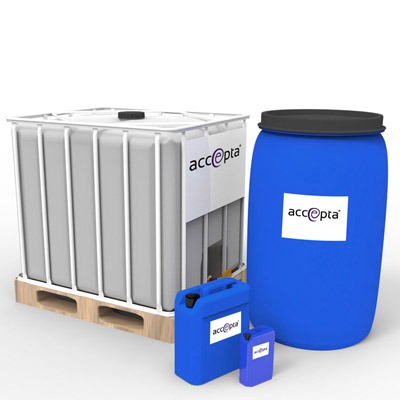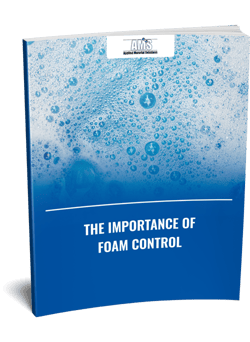Exactly How to Attain Ideal Foam Control for Improved Manufacturing Efficiency
Exactly How to Attain Ideal Foam Control for Improved Manufacturing Efficiency
Blog Article
Effective Techniques for Accomplishing Ideal Foam Control in Chemical Manufacturing
Efficient foam control is a crucial aspect of chemical production that can significantly influence manufacturing efficiency and product quality. By recognizing the mechanisms of foam development and selecting appropriate anti-foaming representatives, manufacturers can take aggressive steps to reduce extreme foam. Additionally, the implementation of process optimization methods and advanced tracking systems plays an essential role in keeping ideal operating problems. Nevertheless, the subtleties of these methods can vary extensively throughout various applications, elevating essential concerns regarding finest methods and real-world implementations that merit additional expedition.
Comprehending Foam Development

Surfactants, or surface-active representatives, decrease the surface area stress of the fluid, helping with bubble stability and advertising foam generation. In addition, anxiety or mixing processes can boost bubble development, often aggravating foam issues. The characteristics of the liquid medium, consisting of thickness and thickness, additional influence foam behavior; for instance, even more viscous fluids have a tendency to trap air more properly, resulting in raised foam security.
Recognizing these essential aspects of foam formation is vital for effective foam control in chemical production. By acknowledging the problems that advertise foam advancement, producers can carry out targeted strategies to alleviate its negative results, therefore enhancing production procedures and guaranteeing regular item top quality. This foundational knowledge is essential prior to checking out certain techniques for controlling foam in industrial setups.
Selection of Anti-Foaming Agents
When picking anti-foaming agents, it is necessary to think about the specific attributes of the chemical process and the kind of foam being created (Foam Control). Different elements influence the performance of an anti-foaming representative, including its chemical structure, temperature security, and compatibility with various other procedure products
Silicone-based anti-foams are extensively made use of because of their high effectiveness and broad temperature range. They work by minimizing surface stress, allowing the foam bubbles to integrate and break even more easily. However, they might not be appropriate for all applications, especially those including delicate formulations where silicone contamination is a problem.
On the other hand, non-silicone representatives, such as mineral oils or organic compounds, can be helpful in particular scenarios, specifically when silicone residues are unfavorable. These agents often tend to be less efficient at higher temperature levels yet can provide reliable foam control in various other conditions.
In addition, recognizing the foam's beginning-- whether it arises from aeration, agitation, or chemical reactions-- guides the option procedure. Testing under real operating problems is vital to ensure that the selected anti-foaming representative meets the one-of-a-kind needs of the chemical production process properly.
Process Optimization Strategies
Reliable foam control is an important facet of maximizing chemical production processes. By fine-tuning these specifications, operators can lower turbulence, therefore lessening foam development throughout mixing.
Furthermore, managing temperature level and stress within the system can dramatically impact foam generation. Decreasing the temperature level might minimize the volatility of specific parts, resulting in lowered foam. Keeping optimum pressure degrees assists in reducing too much gas launch, which adds to foam security.
An additional effective approach is the critical enhancement of anti-foaming representatives at essential phases of the process. Mindful timing and dose can ensure that these agents properly reduce foam without disrupting other process criteria.
Moreover, incorporating a systematic examination of resources buildings can assist recognize inherently lathering substances, enabling for preemptive procedures. Lastly, conducting routine audits and procedure testimonials can reveal ineffectiveness and locations for enhancement, allowing continual optimization of foam control techniques.
Surveillance and Control Systems
Tracking and control systems play an essential role in maintaining optimum foam administration throughout the chemical manufacturing process. These systems are essential for real-time observation and change of foam degrees, guaranteeing that production effectiveness is maximized while decreasing disruptions triggered by too much foam formation.
Advanced sensors and instrumentation are used to identify foam thickness and height, giving critical information that informs control formulas. This data-driven strategy enables the prompt application of antifoaming agents, guaranteeing that foam levels remain within acceptable restrictions. By integrating tracking systems with procedure control software application, manufacturers can execute automatic feedbacks to foam fluctuations, minimizing the demand for hands-on intervention and enhancing functional uniformity.
Additionally, the combination of artificial intelligence and predictive analytics right into keeping an eye on systems can promote aggressive foam administration. By analyzing historic foam information and functional parameters, these systems can forecast foam generation patterns and recommend preemptive measures. Normal calibration and maintenance of monitoring tools are visit site vital to make sure accuracy and reliability in foam detection.
Inevitably, efficient monitoring and control systems are important for enhancing foam control, advertising safety, and boosting overall productivity in chemical manufacturing settings.

Study and Best Practices
Real-world applications of surveillance and control systems highlight the relevance of foam administration in chemical manufacturing. A noteworthy instance study entails a massive pharmaceutical manufacturer that carried out an automated foam discovery system.
Another excellent situation originates from a petrochemical company that took on a combination of antifoam representatives and process optimization strategies. By assessing foam generation patterns, the company tailored its antifoam dose, causing a 25% decrease in chemical use and considerable price savings. This targeted strategy not just lessened foam disturbance yet likewise enhanced the total security of the manufacturing process.

Final Thought
In conclusion, achieving optimum foam control in chemical production requires an extensive approach incorporating the choice of suitable anti-foaming representatives, application of process optimization techniques, and the assimilation of sophisticated monitoring systems. Normal audits and training even more enhance the performance of these methods, fostering a society of constant improvement. By addressing foam formation proactively, suppliers can dramatically enhance manufacturing effectiveness and item high quality, inevitably contributing to even more economical and sustainable procedures.
By understanding the systems of foam development and choosing ideal anti-foaming agents, suppliers can take positive actions to reduce too much foam. The attributes of the fluid medium, consisting of viscosity and density, more influence foam habits; for instance, more thick fluids have a tendency to catch air more properly, leading to increased foam stability.
Recognizing these useful site fundamental elements of foam development is vital for efficient foam control in chemical manufacturing. By evaluating historic foam information and operational specifications, these systems can anticipate foam web generation patterns and advise preemptive measures. Foam Control. Routine audits of foam control gauges make certain that processes stay maximized, while cultivating a culture of positive foam monitoring can lead to sustainable enhancements throughout the production range
Report this page